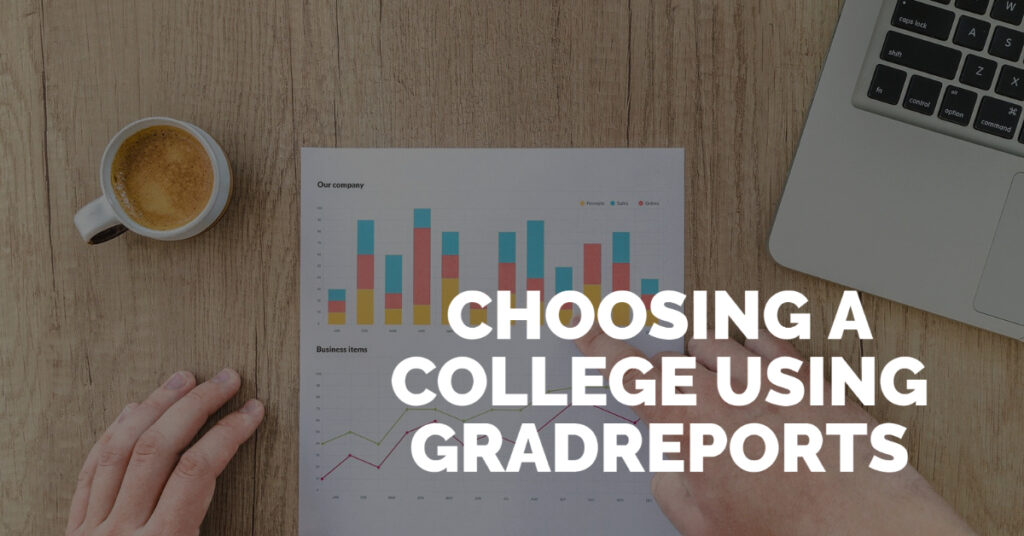College fairs are often bustling events, filled with eager students, university representatives, and stacks of brochures. While the thought of navigating through a sea of booths might seem daunting, attending a college fair can be an invaluable experience for anyone considering higher education. If your student is a high school junior just beginning their college search, here’s why they should make it a point to attend college fairs.
Continue reading Why You Should Attend College FairsTag Archives: choosing a college
Choosing the Right Path Amidst Multiple College Offers
The college decision deadline is approaching for those seniors who have been accepted to colleges and have multiple college offers. Even though some have extended their decision deadlines beyond May 1 due to the FAFSA issues, parents and students are evaluating colleges and comparing offers.
Deciding which college to attend can be one of the most significant decisions in a young person’s life. With multiple offers on the table, the choice can feel overwhelming. However, with careful consideration and a structured approach, you can navigate this maze and choose the college that aligns best with your goals, preferences, and aspiration.
Continue reading Choosing the Right Path Amidst Multiple College OffersChoosing a College
Choosing a college is a significant decision that can shape your student’s future, so it’s crucial to approach it with careful consideration. Here are some key factors to keep in mind when making this important choice:
1. Financial Considerations
This is #1 because it comes before your student even starts their college list. It’s essential to have a clear understanding of your budget and how to manage your finances during college. Evaluate the cost of attending each college, including tuition, fees, and living expenses. Research scholarship opportunities, financial aid options, and work-study programs.
Continue reading Choosing a CollegeWeighing Your College Options

It’s that time of year when seniors will be weighing their college options. Choices will be made as parents and students evaluate colleges who offered admission.
The long wait is over and it’s time to make a decision. Which college will your student attend? This decision feels like the most important decision in his life up to this point and will weigh heavily on his mind and yours over the next month.
Before your teen makes the decision, however, you should weigh your college options. You would never purchase a home without determining its value, its fit for your family, or even its location. This college decision should be approached in the same manner. And to complicate matters, the decision has to be made in a timely manner—the National Candidate’s Reply Date is May 1st.
If your student didn’t get an offer of admission from his first or even second choice college, or he is accepted without enough financial aid, it’s time to re-evaluate the colleges on his list. Your teen should take a closer look at those schools on the list that weren’t on top. If he did his homework before applying, these schools should be more than sloppy seconds.
Continue reading Weighing Your College OptionsChoosing a College Using GradReports

As student debt numbers continue to soar and the job market becomes increasingly competitive, prospective college students care now more than ever about being able to support themselves after graduation – and their parents want to help them avoid drowning in the $1.6 trillion national student loan debt.
GradReports, recently released new proprietary Salary Scores in an effort to empower students with the data necessary to compare schools and equip themselves for a successful future. GradReports compared the salaries of over 4.6 million college graduates to determine Salary Scores for 2,200+ colleges and 334 majors.
Continue reading Choosing a College Using GradReportsTips for Choosing the Right College

Choosing a college to go to can be difficult. If you make the wrong choice then this may have an impact on your education for the next few years of your life, but with a bit of research you can be sure to make the right decision.
Accreditation
It doesn’t matter what type of college you are looking to attend because you need to choose one that is accredited. There are various types of accreditation, and some of them include licenses and certificates too. It also helps to do some research as it will help you to understand where your chosen college excels. Quite often, the college will list any credentials they have on their site, so take note of them and then work out what each accreditation stands for. This way you can find out exactly what the college can offer you, and you can also get some valuable insight into how they work as well.
Reviews
One of the best ways for you to understand the quality of a school is to look up rankings and ratings. There are plenty of sites that have all of the information you need, and a lot of them are based on student experiences. You can find out more about a school’s culture, the faculties that are available and even the social life that people have on campus. Remember that going to college isn’t just about the educational facilities, it’s about the student experience too. If a college doesn’t show good reviews for a specific time period, that doesn’t mean that they haven’t turned things around since. Jerry Jellig for example, works with educational institutions to help them do this.
Academic Support
College can sometimes be a challenge, so it helps to know that you have some degree of academic support outside the classroom. Look up to see if your chosen college offers remedial courses in core subjects, and also find out if you have to pay for this.
Social
Do you like to meet up with new people? Or would you prefer more of a close-knit community? Either way, the environment of a school is very important. There is a high chance that you are going to be staying there for years, and you may even be living on or near campus too. A few years is a long time to be living in a community that does not suit your personality. Take the time to find out how many people attend your university, how far away you are from the social and entertainment facilities, and also see if there are any smaller areas around the college that you would rather stay at.
Extracurricular
Sports are often emphasised at college and this is great. If you’re not the sporting kind however then it helps to see if there are any other activities that you could take part in. Sometimes you need to unwind at the end of a long day, so if there are any particular extracurricular activities that you would like to take part in, or if there are any clubs that you would enjoy then take note when making your decision.
Should You “Follow the Money” When Choosing a College?

I’ve said over and over again to parents, “You’ve got to look at the statistics when it comes to paying for college.” Before the list begins, before the college visits start and before the applications are completed, you MUST know how much it costs and if you can afford to pay for it. You should “follow the money” when choosing a college!
Where can you find the statistics? You can do your own research on College Navigator or CollegeData, or you look at these compiled from a survey by the Princeton Review.
Look at these statistics from the Princeton Review’s 2018 Edition of Colleges That Pay You Back:
- “Best Financial Aid” #1 Bowdoin College (ME) / #25 Macalester College (MN)
- “Best Career Placement” – #1 Harvey Mudd College (CA) / #25 Cornell University (NY)
- “Best Alumni Network” – #1 Pennsylvania State University / #25 Union College (NY)
- “Best Schools for Internships” – #1 Northeastern University (MA) / #25 Gettysburg College (PA)
- “Best Schools for Making an Impact” – #1 Wesleyan University (CT) / #25 Kalamazoo College (MI)
- “Top Colleges That Pay You Back for Students with No Demonstrated Need” – #1 Harvey Mudd College (CA) / #25 University of Michigan—Ann Arbor
These are more than statistics. They help you decide if your college investment will be worth the cost. Your student may not be thinking along these lines, but it’s your job to bring them down to earth.
When choosing a college, ROI (return on investment) should be part of the decision mix. Take a look at these Top 50 colleges with the highest ROI.
What does the survey tell us?
Among the 200 colleges (135 private and 65 public) in the book:
- the average grant to students with need is $26,800
- the median starting salary of graduates is $55,700 and mid-career salary is $108,700.
Among the book’s 65 public colleges:
- the average net cost of attendance (sticker price minus average grant) for in-state students receiving need-based aid is $12,700
- the average admission rate is 53% and 12 colleges admit over 70%
Among the survey findings, 99% of respondents viewed college as “worth it,” but 98% said “financial aid would be necessary” to pay for it (65% of that cohort deemed aid “extremely necessary”).
Why should you consider these factors?
Before my daughter chose a college, we didn’t examine any of these factors. We compared financial aid packages, but we didn’t look for a college that was a good return on our investment. When it comes down to it, you spend a good amount of money on a college education. It’s an investment in your student’s future. We would never knowingly throw money into a bad investment or purchase a home high above market value, but every day parents invest their money in a college that won’t pay their student back.
Whether it’s career placement, networking, internships or tremendous financial aid, you should consider some of these colleges when making that final college list.
My Daughter Turned Down a Full-Ride Scholarship

During this financial aid award season, several years ago, my daughter had to make a difficult decision: which college would receive her acceptance of an offer of admission. Of the many colleges she applied to, they included private colleges, state universities, and trade colleges. Some offered her financial aid, others did not. It was a heart-wrenching decision for her: choose the college that offered the best financial aid package with a full-ride scholarship, choose her dream college that gapped her offering no financial aid, or choose the college that was her perfect fit.
For me, it was a no-brainer. One college offered her a full-ride scholarship, along with the major she wanted to pursue. It was in the city she wanted to live in. All the boxes were checked off. There was one problem, however. Since the college was over 2000 miles away from her home, she applied without ever visiting the campus.
Still stuck on her dream college, we scheduled college visits to the other colleges on her list. Here’s where the emotional issue of choosing a college entered into the mix. For teens, the college choice is always more emotional than practical. For parents, this factor makes it even more difficult for you to guide your student in the best decision.
After visiting three colleges in the same city, one her dream college, she was faced with a difficult choice. If it were up to her, she would have chosen her dream college. Knowing this decision would put her into debt, I was able to convince her to look at the other schools.
One of the other colleges offered her a full-ride scholarship; but when we drove onto the campus she immediately balked. Her reaction was so severe that she wouldn’t even get out of the car. My reaction—total anger and frustration. But I knew that I would regret forcing her to consider this college when she was so adamantly against it. So we drove away and moved on to the next college; knowing full well this meant she was turning her back on a full-ride scholarship.
The next college was a slam dunk. She loved the campus. She loved the tour and the students she met. She loved the location, its surroundings, and the total college experience it offered her. It was a small campus and since she would be so far away from home, it would be easier for her to assimilate in this type of environment. Since it was a liberal arts college, she could minor in English—something she had always wanted to do. The next best part, their financial aid package was doable. With her scholarships, grants and work study, she would only have to take out minimal student loans.
Seeing her turn down a full-ride scholarships was a tough pill to swallow. As her parent, I was completely focused on the financial aspect of the decision. But once I saw how excited she was about the other college and saw the smiles on her face, I knew this was the right decision.
Letting her make an emotional college choice (coupled with some financial sense) was the right decision. She flourished at that college. She met lifelong friends. She was able to get a well-rounded education and graduate with a degree that was employable. She still thanks me every day for letting her make that emotional choice and for also standing firm on the impracticality of her dream college.
Choosing a college is a highly emotional decision for your student. Your job as a parent is to guide them into a practical choice while taking into account that you want a happy student going off to college. Although financing should be a key part of the decision, it’s not always about the money.
Wednesday’s Parent: What is a Perfect Fit College?
 What is a perfect fit college? When asked, “how do you determine if a college is the right fit?”, overlook all the emotional motives:
What is a perfect fit college? When asked, “how do you determine if a college is the right fit?”, overlook all the emotional motives:
- Your friends are going there
- Your parents went there
- You like the football team
- Your boyfriend/girlfriend has chosen it
- You want to impress your friends by the name
- You want to stay close to/or move far away from home
Once you remove those emotional motives, you can concentrate on six criteria that will help you determine whether or not the college is a “perfect fit”:
- A place you can afford.
- A place that provides the academic program that meets your needs.
- A place that provides the style of instruction that best fits your learning style.
- A place that provides a level of rigor and challenge equal to your ability.
- A place that feels like home.
- A place that values you for what you do well.
You will notice that #1 is about the financial fit. Before you even look at 2-6, you MUST be the “voice of financial reality”. This will save you much heartache in the future. In an article on University Parent’s blog: Reality, fit and substance—The ultimate college list, financial fit is key:
Before your student gets her heart set, get clear on what your family can afford. Take half an hour to work through the “net price calculator” available on most school websites, or use the FAFSA4caster to estimate federal student aid. These tools calculate your family’s financial need — essentially the difference between the college sticker price and what the formula says you are able to contribute.
Net price calculators don’t assess potential merit aid — institutional money set aside for students based on varying factors like GPA, standardized test scores, advanced courses, etc. Some institutions include merit calculators on their websites; many do not. To learn how specific schools determine merit aid, don’t hesitate to call the admissions office and ask.
With net price and merit aid estimates in hand, your student’s list can be more economically viable. If you and she have assumed that private scholarships and loans will fill gaps, the amounts you are supposing are now clearer, and that’s a good thing.
Once #1 is addressed, you should encourage your teen to “chew” on each of those remaining and think about what it is they want to get out of a college education. College is more than bricks and mortar and a place to get a diploma. It’s a place where the mind is challenged, social interaction abounds, friendships are formed and a place your college-bound teen will call home for at least four years of their life. That “perfect fit” will assure your teen is comfortable, challenged and ready to learn.
Read Wendy’s Post: The Prime Relationship Between College List and College Fit
+++++++++++++++++++
Wednesday’s child may be full of woe but Wednesday’s Parent can substitute action for anxiety. Each Wednesday Wendy and I will provide parent tips to get and keep your student on the college track. It’s never too late or too early to start!
The bonus is on the fourth Wednesday of each month when Wendy and I will host Twitter chat #CampusChat at 9pm ET/6pm PT. This week’s guest will be Jessica Velasco (@Admissions411) discussing college fit.
Wednesday’s Parent will give twice the info and double the blog posts on critical parenting issues by clicking on the link at the end of the article from parentingforcollege to pocsmom.com and vice versa.
Mom-Approved Tips: How Will You Make the Final College Choice?
 The May 1st decision deadline is approaching and families are anguishing over that final college choice. The college your student chooses will be her home for the next four years. It will be her extended family. Her choice should take into consideration those two facts. But how will you make the final college choice?
The May 1st decision deadline is approaching and families are anguishing over that final college choice. The college your student chooses will be her home for the next four years. It will be her extended family. Her choice should take into consideration those two facts. But how will you make the final college choice?
Make another college visit
It’s time to revisit the colleges. This is by far the most important element of making the final college choice. If the college hosts admitted student events, your student should attend. This visit could have a profound effect on their decision. Spend as much time on campus as needed—talk with students, attend a class, talk with professors, and take your own campus tour.
Compare financial aid awards
After the visit, compare the awards. Who offers the best financial aid package? Will the awards carry your student through all four years of college (are they renewable?). Did the college include loans as part of the package? Was your student “gapped”?
Even if the college is your student’s first choice, the award should factor in to your decision. The last thing you or your student want is to graduate with overwhelming student debt. Trust me—she will thank you in the future for being the voice of reason.
Compare colleges who offered admission
In an article I wrote for University Parent, How Will Your Senior Decide?, I make these suggestions:
Begin by reexamining all the factors your student considered when applying. For each college or university, take a second — and closer — look at location, academics, the size of the student body, and other elements that made your student feel it would be a good fit. Review statistics including the freshman retention and four-year graduation rates.
It’s been months since she submitted her applications. If she got in, is she still in love with her first-choice college? Has she learned anything about the school since she applied that changes the way she views it? Has anything changed for her? Does the school still fit with her long-term academic and personal goals?
This is a good time for your student to gather information from a few trusted sources. She doesn’t need to invite everyone she knows into the decision-making process, but it can really help to consult with older siblings and friends, or teachers, coaches, or counselors.
Based on this research and reflection, make a list of pros and cons for each college and compare them side-by-side. The top two or three should be evident.
Before your student accepts a college’s offer of admission, take all these factors into consideration. You want your student to be happy, but you also want her to graduate with minimal debt.



